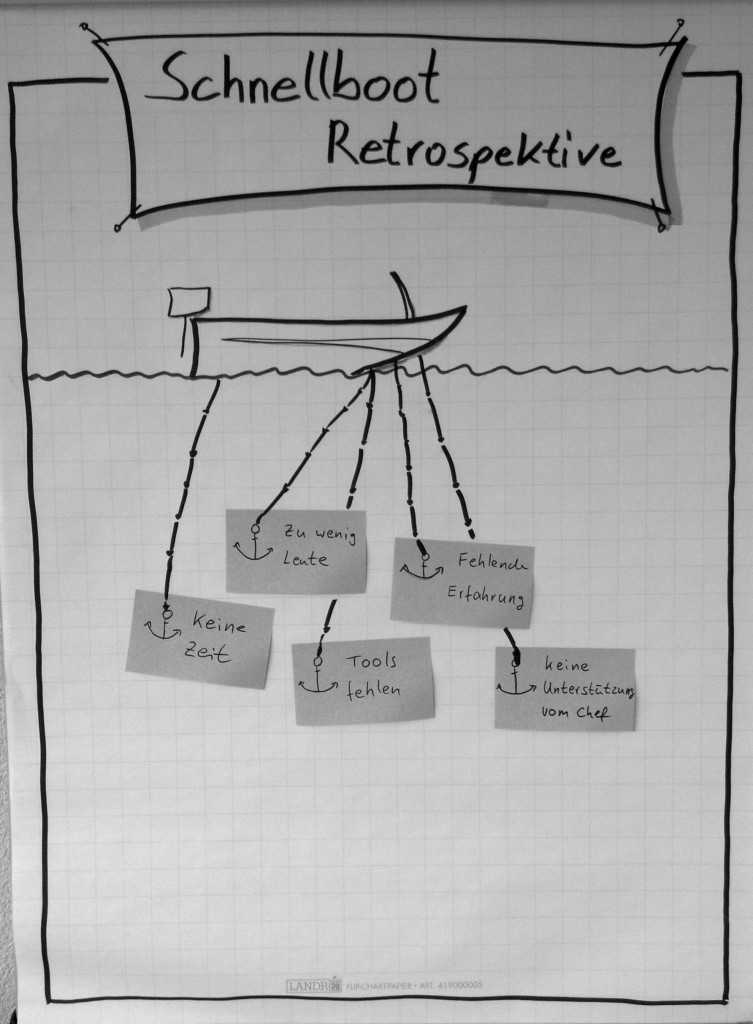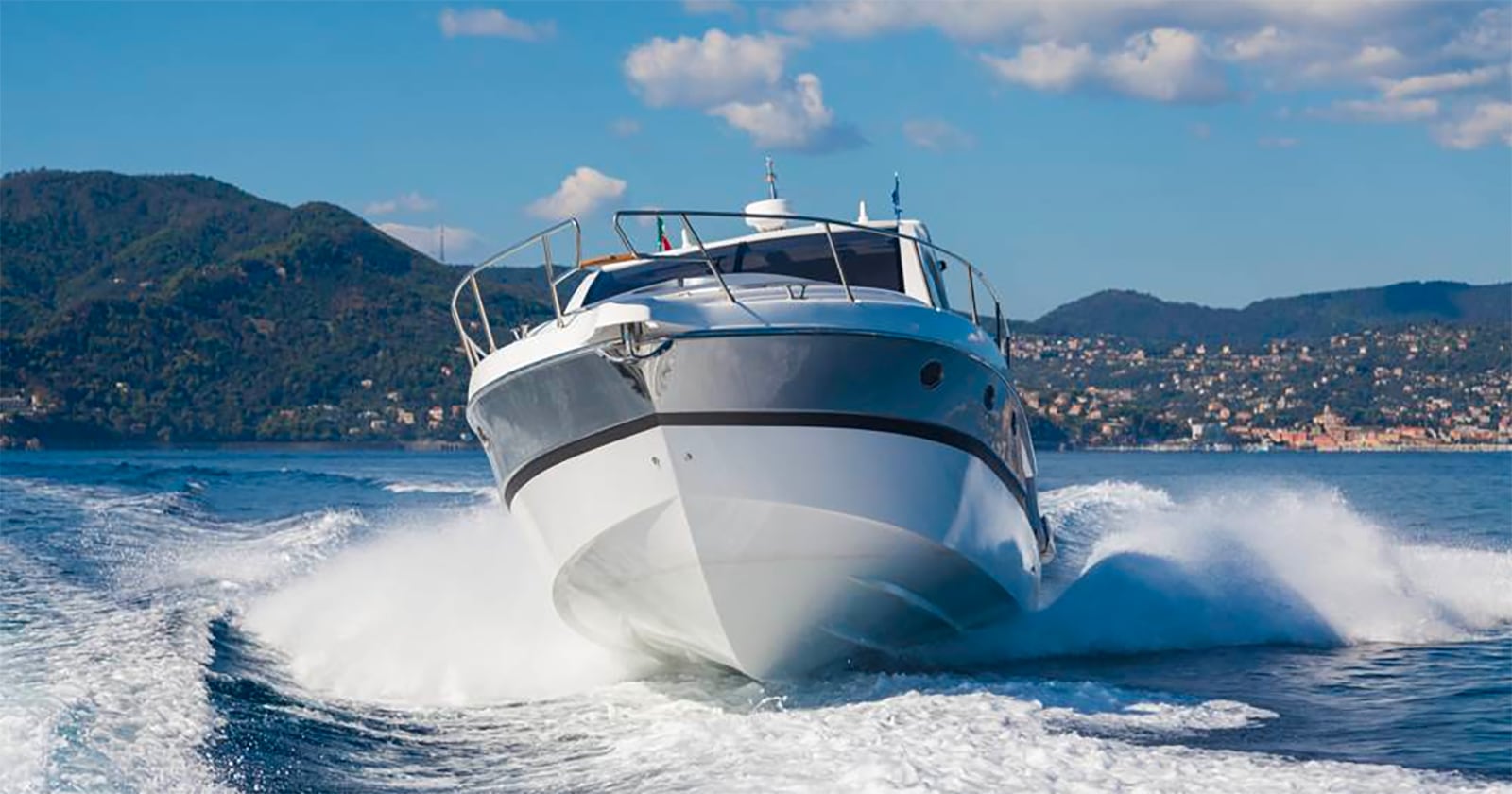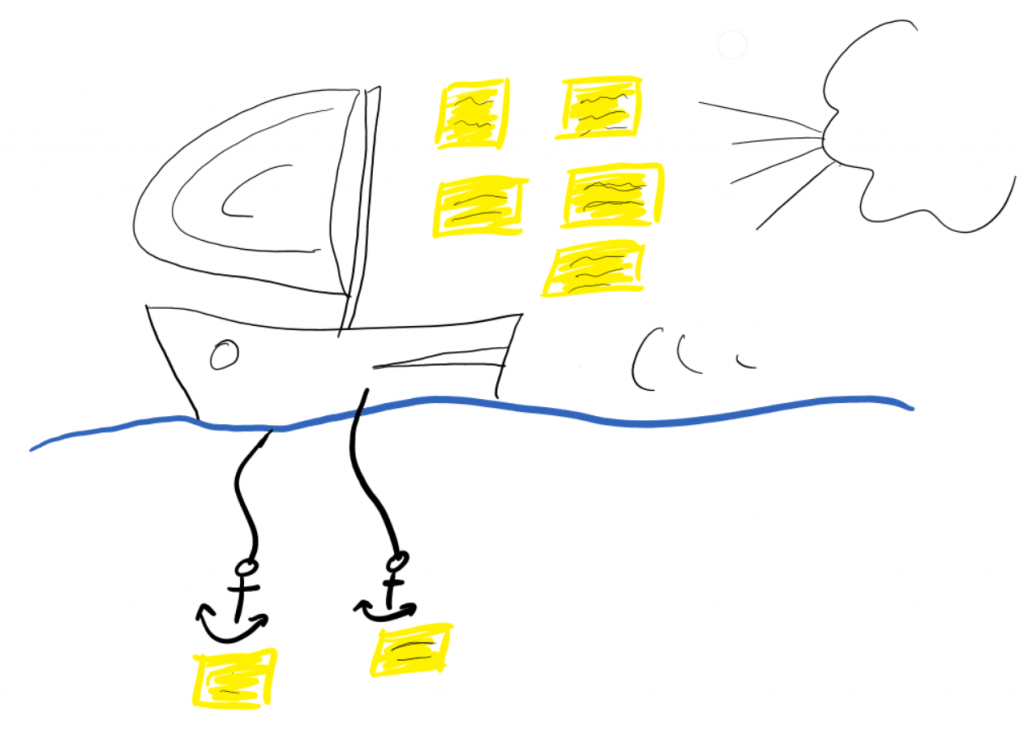The Speedboat Retrospective is one of my favorite visualization techniques I use in retrospectives. The origin of this technique goes back to Luke Hohmann, who presented it as one of the innovation games in his book “Innovation Games.”
The idea is to draw a speedboat on a flip chart and ask the team, “If our team is this speedboat, what anchors are holding us back and keeping us from getting faster/better?”
Then the team collects all their ideas on Post-Its, puts them below the boat, and draws a line from the boat to the anchor.
This is how such a speedboat could look:

This is always a good starting point for taking the next steps in a retrospective, but the whole technique has one flaw: It only focuses on the negative.
In the last few years, I’ve gotten more and more in touch with the Solution-Focused approach. It is a technique that focuses on the solutions (as the name already implies) instead of the problems. If you are working with a Solution-focused coach, she will always try to help you focus on the positive things or turn negative comments into positive wishes. This definition is quite simplified, but you get the point.
If we apply Solution-Focused thinking to the speedboat exercise, the visualization would change into a sailboat and look like this:
Now we not only have anchors holding us back, but wind that blows to move us forward. This gives us the possibility of turning each anchor into a gust of wind.
You can use this sailboat now in two ways:
- Ask the team: “What are the gusts of wind that help our sailboat to move forward” and collect their ideas on Post-Its.
- Do this exercise in three steps:
- First collect all the anchors, as it’s easier for most teams to collect their current problems.
- Ask the team to turn each anchor into goals, desires or wishes and put them before the cloud to represent the gusts of wind pushing the boat forward.
- Use these “winds” to define a desirable goal that you will use as true north for the rest of the retrospective.
There is even a third alternative, where you only focus on the winds and ignore the anchors. I really like this approach, as it helps the team to focus on the good things and also gives them a feeling of accomplishment. Most teams have something positive to talk about that helps them to understand that there are already things that work fine. And it’s definitely worth the time to help the team to build on this base.
What do you think about this technique? Do you like it? If you try it, I’d like to read about it in the comments, too.












